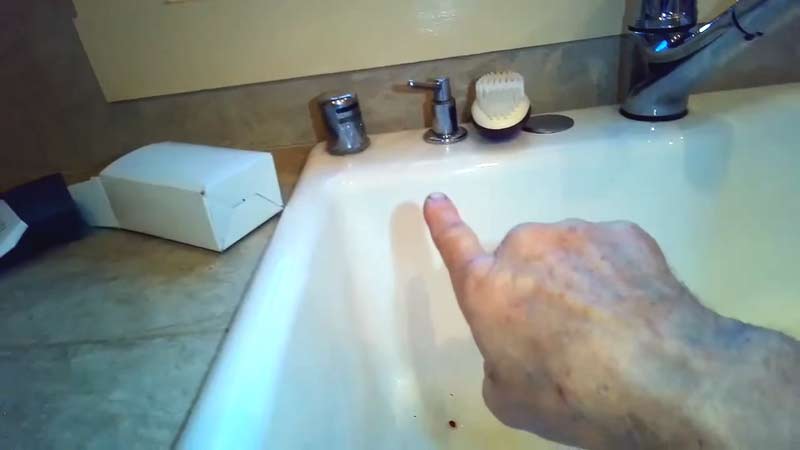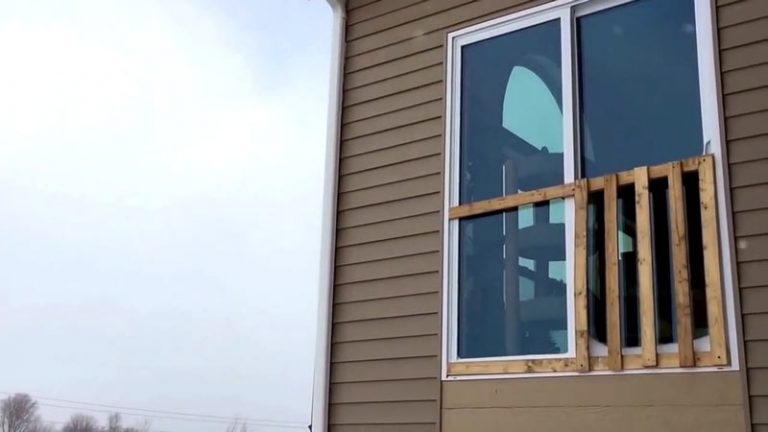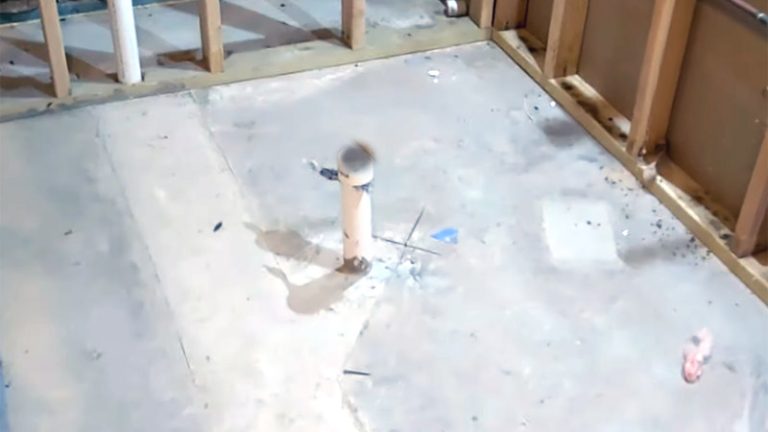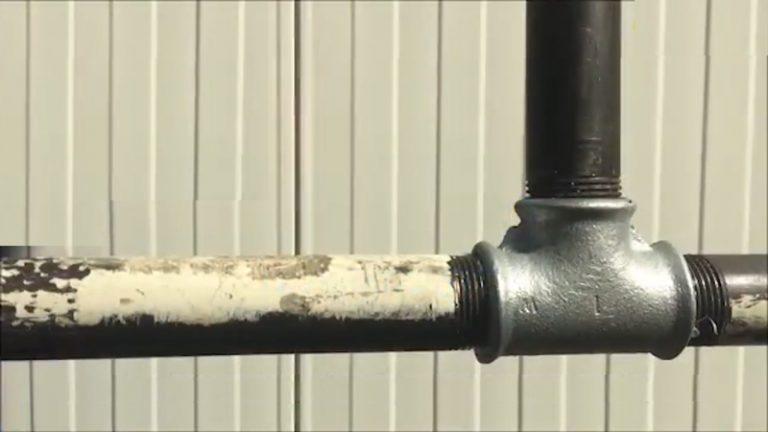Why Shouldn’t You Drain A Dishwasher Directly Into The Waste Line?

Installing a dishwasher in your home can be a convenient and cost-effective way to improve your daily routine. However, it is important to properly install the dishwasher’s drain to ensure it functions properly and avoids any potential problems.
An improperly installed drain can cause issues such as sewage backup, water leaks, and even damage to your home. Therefore, it is essential to follow proper installation techniques and adhere to local plumbing codes to ensure a successful installation.
In this article, we will discuss the proper way to connect a dishwasher drain and provide tips for a successful installation.
You'll Learn About
Does a Dishwasher Need a Loop in the Drain Line?
A dishwasher drain line loop, also known as an air gap, is an important part of the dishwasher’s plumbing system. Its main purpose is to prevent the backflow of dirty water and sewage from the dishwasher into the home’s clean water supply.
A dishwasher drain line loop is a small pipe that is installed above the sink or countertop, and it is connected to the dishwasher’s drain hose and the home’s plumbing system. When the dishwasher is in use, water is pumped out through the drain hose and into the loop. From there, the water flows into the home’s plumbing system, where it is properly disposed of.
If a dishwasher drain line loop is not installed, there is a risk of dirty water and sewage backing up into the dishwasher and potentially contaminating the clean water supply. This can be a serious health hazard and can also cause damage to the home’s plumbing system.
A dishwasher drain line loop is a necessary component of the dishwasher’s plumbing system. It helps to prevent the backflow of dirty water and sewage and ensures that the dishwasher functions properly and safely.
Why Shouldn’t You Drain A Dishwasher Directly Into The Waste Line?
Draining a dishwasher directly into the waste line is not recommended, as it can cause a variety of problems. One of the main issues with this type of installation is the potential for sewer gas and wastewater to come back into the dishwasher.
Harmful Gas Mixture
Sewer gas is a mixture of gases that can be harmful to inhale and can cause health problems. In addition, wastewater can contain harmful bacteria and other contaminants, which can pose a risk to both human health and the environment.
Illegal
In addition to the potential health and safety issues, draining a dishwasher directly into the waste line is likely to be illegal in many areas. Plumbing codes typically require that dishwashers be connected to the plumbing system using a properly installed drain hose.
This ensures that the dishwasher is properly vented and that wastewater is properly disposed of. Failing to follow these codes can result in fines and other penalties.
Local Plumbing Codes
Overall, it is important to follow proper installation techniques and adhere to local plumbing codes when installing a dishwasher drain to avoid potential problems and ensure the dishwasher functions correctly.
The Proper Way to Connect A Dishwasher Drain
To properly connect a dishwasher, and drain, you will need to install a high loop in the drain hose under the sink. This is necessary to prevent siphoning, which can occur when the dishwasher drain is below the level of the sink’s drain system.
High Loop
A high loop is created by running the dishwasher drain hose up and over the top of the dishwasher, then down to the sink’s drain system. This creates a loop that is higher than the dishwasher, which prevents water from being siphoned out of the dishwasher.
Connect to Sink
Next, you will need to connect the dishwasher drain hose to the sink’s drain system using a sanitary tee or another appropriate fitting. This will typically involve attaching the dishwasher drain hose to the tailpiece of the sink’s drain, or to the outlet of the garbage disposal if one is present. Make sure to use a fitting that is compatible with the size and type of drain hose you are using.
Proper Ventilaton
Proper ventilation is also important to prevent airlock and allow the dishwasher to drain properly. This typically involves connecting the dishwasher drain to the plumbing system’s vent stack or installing a separate vent for the dishwasher. Consult with a plumber or refer to local plumbing codes for specific ventilation requirements.
By following these steps and using the proper materials and fittings, you can properly connect a dishwasher drain and ensure that it functions correctly.
Tips For A Successful Installation
To ensure a successful installation of a dishwasher drain, there are a few important tips to keep in mind:
Follow Local Plumbing Codes And Obtain Any Necessary Permits
It is important to follow all relevant plumbing codes when installing a dishwasher drain to ensure that it is safe and compliant. This may involve obtaining a permit from your local building department or hiring a licensed plumber to perform the installation.
Use Proper Materials And Fittings
Using the correct materials and fittings is crucial to ensure a secure and leak-free connection. Make sure to use a drain hose that is compatible with your dishwasher and the plumbing system, and use appropriate fittings such as a sanitary tee or garbage disposal adapter to connect the dishwasher drain hose to the sink’s drain system.
Test The Dishwasher After Installation
After installing the dishwasher drain, it is important to test the dishwasher to make sure it is draining properly. Run a cycle with the dishwasher empty to ensure that it is properly connected and functioning correctly.
If you notice any issues, such as water not draining or leaks, it may be necessary to adjust the drain hose or fittings or consult with a plumber for further assistance.
By following these tips, you can ensure a successful installation of your dishwasher drain and enjoy the convenience and efficiency of your new appliance.
Can You Plumb a Dishwasher Anywhere?
It is generally possible to plumb a dishwasher in most locations where there is access to a water supply and a drain. However, there are a few factors to consider when deciding where to install a dishwasher:
- Access to water supply: The dishwasher needs to be connected to a water supply in order to function properly. This typically requires running a water supply line from the nearest hot water source, such as a hot water heater or the kitchen sink.
- Access to drain: The dishwasher also needs to be connected to a drain in order to properly dispose of wastewater. This typically requires running a drain hose from the dishwasher to a nearby sink or to the home’s main drain line.
- Proximity to the sink: It is generally more convenient to install the dishwasher near the kitchen sink, as this allows easy access to the water supply and drain.
- Access to electrical outlet: Most dishwashers require an electrical outlet for power. Make sure that there is an outlet nearby or that an electrical outlet can be easily installed.
Overall, it is generally possible to plumb a dishwasher in most locations as long as there is access to a water supply, drain, and electrical outlet. However, the specific requirements may vary depending on the specific model and the local plumbing codes. It is always a good idea to consult a qualified plumber or appliance professional to ensure that the dishwasher is installed correctly and safely.
Editor’s Note
It is not recommended to drain a dishwasher directly into the waste line, as this can cause problems such as sewer gas and wastewater coming back into the dishwasher. It is also likely to be illegal. Some people also fetch problem like sink gurgling, sink backing up.
Instead, the dishwasher should be connected to the plumbing system using a properly installed drain hose. This typically involves installing a high loop in the drain hose under the sink to prevent siphoning, and connecting the dishwasher drain hose to the sink’s drain system using a sanitary tee or another appropriate fitting.
The dishwasher drain should be properly vented to prevent airlock and allow the dishwasher to drain properly. It is also important to follow local plumbing codes and obtain any necessary permits when installing a dishwasher.
Frequently Asked Questions
Q: What is the main issue with draining a dishwasher directly into the waste line?
A: The main issue with this type of installation is the potential for sewer gas and wastewater to come back into the dishwasher. This can be harmful to inhale and can cause health problems.
Q: Is it legal to drain a dishwasher directly into the waste line?
A: It is likely to be illegal in many areas to drain a dishwasher directly into the waste line. Plumbing codes typically require that dishwashers be connected to the plumbing system using a properly installed drain hose.
Q: Why is it important to follow proper installation techniques and local plumbing codes when installing a dishwasher drain?
A: Proper installation and adherence to local codes is important to ensure that the dishwasher is properly vented and that wastewater is properly disposed of. Failing to follow these codes can result in fines and other penalties. It is also important to follow these guidelines to ensure that the dishwasher functions correctly.
Conclusion
In conclusion, it is important to properly install a dishwasher drain to avoid potential problems and ensure that the dishwasher functions correctly. Draining a dishwasher directly into the waste line is not recommended, as it can cause issues such as sewer gas and wastewater coming back into the dishwasher, as well as being illegal in many areas.
Instead, the dishwasher should be connected to the plumbing system using a properly installed drain hose, which typically involves installing a high loop in the drain hose under the sink and connecting the dishwasher drain hose to the sink’s drain system using a sanitary tee or another appropriate fitting.
Proper ventilation is also important to prevent airlocks and ensure that the dishwasher drains properly. By following proper installation techniques and adhering to local plumbing codes, you can ensure a successful and problem-free installation of your dishwasher drain.





